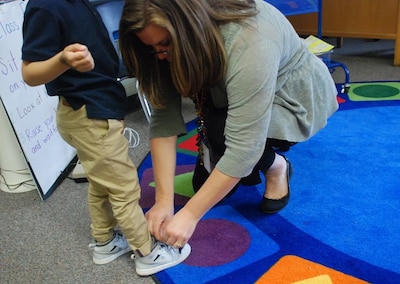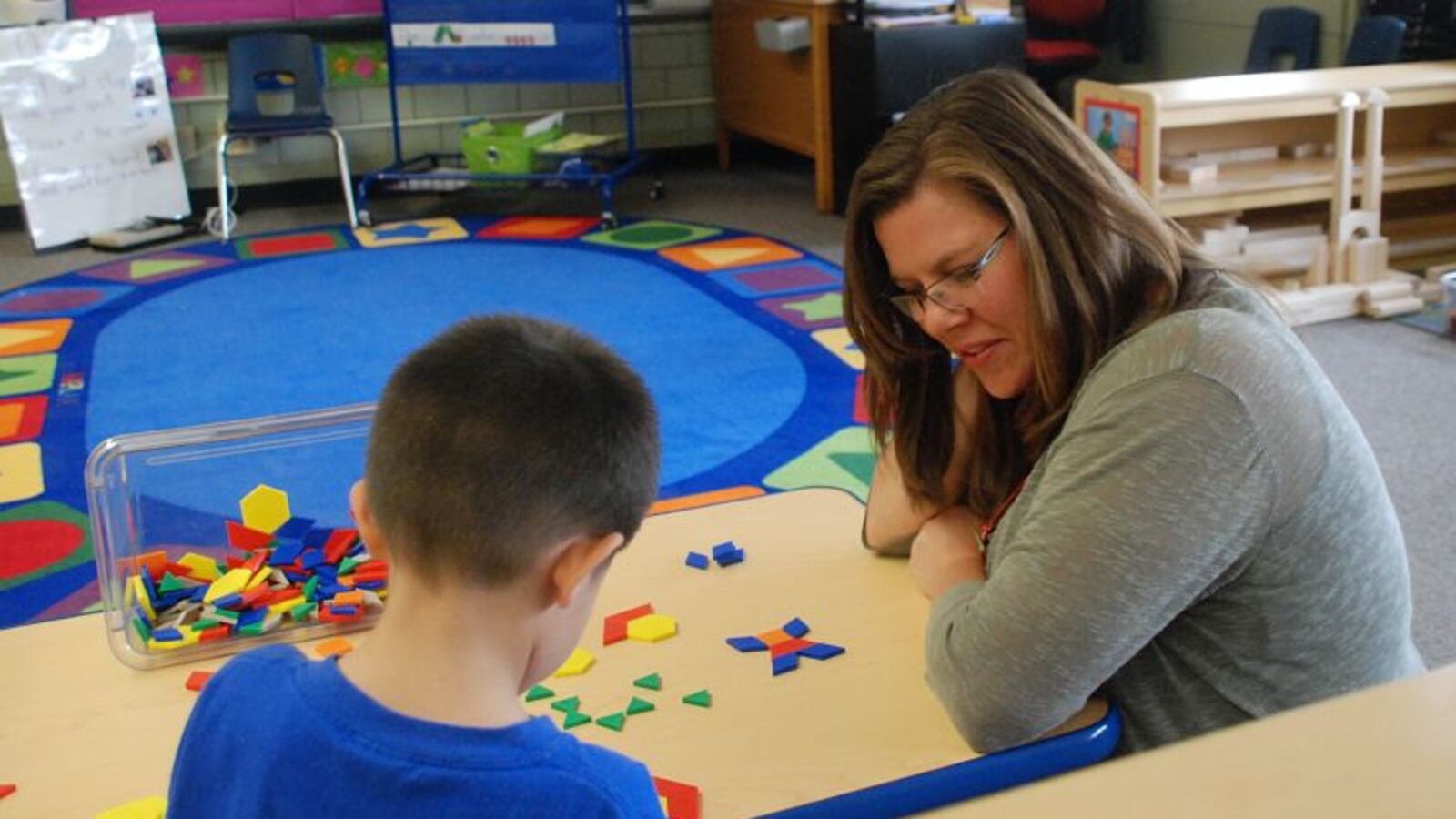For years, Brandy Barhite heard the same thing: “You should be a teacher.”
But the Denver Public Schools paraprofessional faced several obstacles. She was raising two kids. She’d never been to college. She couldn’t afford to cut her work hours to attend classes. And honestly, she said, she wasn’t sure she had time to do all the extras — grading papers, calling parents, planning lessons — that teachers do after the bell rings.
When she and her husband became empty nesters two summers ago, however, Barhite said she began seriously considering what it would take. Discouragingly, the programs she looked into wouldn’t allow her to work full-time, making it infeasible for her family.
Then last spring, Barhite got an email about a new DPS initiative to help teacher’s aides earn a bachelor’s degree and a teaching license while keeping their jobs for most of the time they’re in school. The district was offering full-ride scholarships to interested paraprofessionals.
To Barhite, it felt like a window after so many shut doors.
“I thought, ‘I love my job as a para, but I can make a greater impact if I get my degree and go into teaching,’” she said. And so this summer, she became a 43-year-old college freshman.
Barhite is one of 20 paraprofessionals in the program, which is so new it doesn’t have a name.
It’s currently being funded in large part by a $90,000 grant from Denver-based Gary Community Investments, which includes the Piton Foundation. But a $56.6 million tax increase proposal, known as a mill levy override, that voters will be asked to approve next month includes funding to expand and sustain it. (A member of the Gary family, via the Piton Foundation, is a financial supporter of Chalkbeat.)
The program aims to address a growing teacher shortage — a problem impacting Colorado and the nation — while also increasing the number of teachers of color in DPS.
Last year, 78 percent of Denver students were children of color, while 74 percent of teachers were white — a disparity research has shown can lead to uneven discipline and poor cultural understanding between teachers and students. However, the paraprofessional pool more closely mirrors the student population: 65 percent of DPS paraprofessionals are educators of color, according to Laney Shaler, director of new teacher pathways and development.
Sixty percent of the 20 paraprofessionals in the new program are educators of color, Shaler said. Barhite isn’t one of them. But because she wants to become a special education teacher, she would help fill another critical need.
Removing barriers
DPS has long tried to come up with new and innovative ways to recruit paraprofessionals to become teachers, Shaler said. That’s partly because so-called “grow-your-own” efforts are considered more effective in retaining teachers for more than a couple of years — another issue the state’s largest school district has struggled with.
“Paras are already working with kids and understand the context of our schools,” Shaler said. Plus, they already live locally and thus are more likely to stay in the area.
But, as Barhite experienced, there always seemed to be barriers keeping DPS from recruiting them in large numbers, Shaler said: Many aren’t eligible for existing teacher residency programs because they haven’t completed their bachelor’s degrees. Or they can’t afford to quit their jobs to complete the unpaid student teaching most training programs require.
This new program is different in several ways the district hopes will make it easier. DPS has enlisted the assistance of a local organization called Guild Education that was founded in 2015 by an East High graduate. Guild helps employers create opportunities for their employees to take classes and earn degrees from nonprofit colleges that cater to working adults.
The DPS paraprofessionals are students at Western Governors University, a nonprofit online university started by several western governors. Paraprofessionals complete coursework when it’s convenient for them and can adjust their schedules to take more classes when they have more time, such as during the summer. The classes are competency-based, meaning they can test out of subjects they know well and focus on those they don’t.
Guild Education matches each paraprofessional with a coach who helps them enroll and navigate finances. (The online universities Guild works with typically cost between $6,000 to $7,500 per year, co-founder and CEO Rachel Carlson said.) The coaches also help students set personal, professional and education goals and check in with them weekly, she said.
“They’re like cheerleaders,” Barhite said last week, sitting in one of the only adult-sized chairs in the preschool classroom at northwest Denver’s Beach Court Elementary, where she’s worked for five of the nine years she’s been a paraprofessional. “When I started my first class, I got a card with candy signed by everybody in the office that said, ‘We’re cheering you on.’”

DPS doesn’t pay Guild directly; instead, Guild receives a portion of each student’s tuition from Western Governors University in exchange for providing coaching, Carlson said.
At the moment, Shaler said, DPS is using the money donated by Gary Community Investments to subsidize the paraprofessionals’ tuition to make the cost as close to zero as possible. If the tax increase passes next month, those funds would go toward providing the paras with financial support during their year of student teaching, she said.
‘Cutting edge’
Several other states and school districts have similar programs. For instance, a federally funded program in Illinois helps bilingual paraprofessionals become teachers while working full-time, as long as they commit to teaching in a high-needs school or district for a minimum of three years.
(The DPS program doesn’t currently have such a requirement, though Shaler said the district may consider adopting one in the future.)
Locally, the University of Colorado Denver offers the NxtGEN teacher education program, in which students work part-time as paraprofessionals while taking classes and eventually do a year-long residency in a DPS school. It’s similar to the new DPS program in that many students are minorities but differs in that students work part-time, not full-time.
Rodrick Lucero, the vice president for member engagement and support with the American Association of Colleges for Teacher Education, said he applauds DPS’s efforts.
“Our paras have been such an underutilized and under-respected pool for such a long time,” he said, adding that Denver’s approach “fits on that definition of ‘cutting edge.’”
Sitting on a blue plastic chair surrounded by teeny-tiny tables and shelves stocked with crayons and baby dolls, Barhite said she can’t believe she’s been given such an opportunity.
“My husband and I are blue-collar workers that get by,” she said, explaining that they’ve never been able to save for retirement. “(Earning) a degree is making me feel like our future can be brighter. We’ll have a cushion and be able to pass on something to our children.”
“I really can’t fail unless I choose to,” she added, “and I choose not to.”

